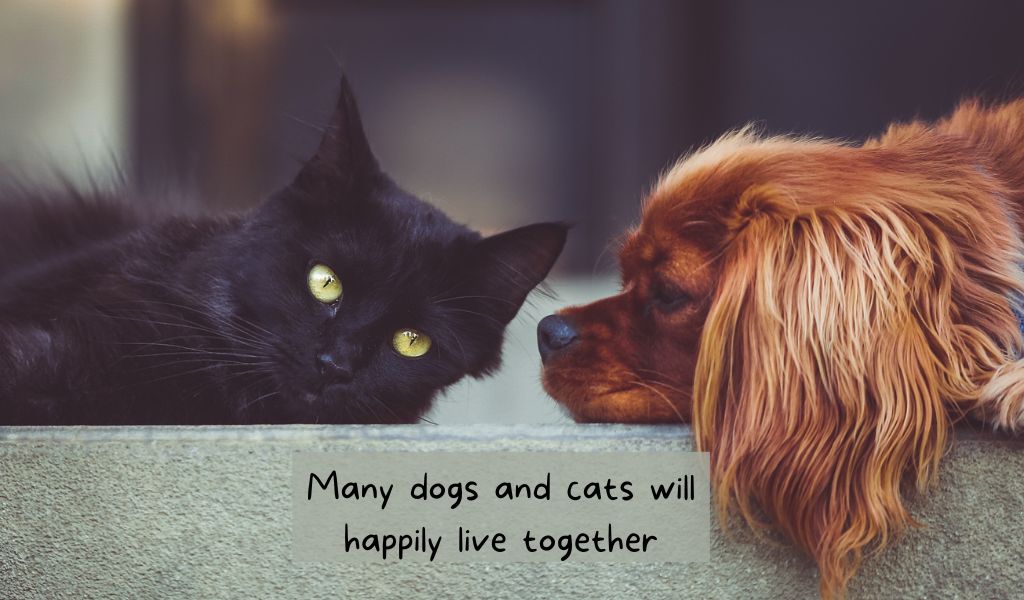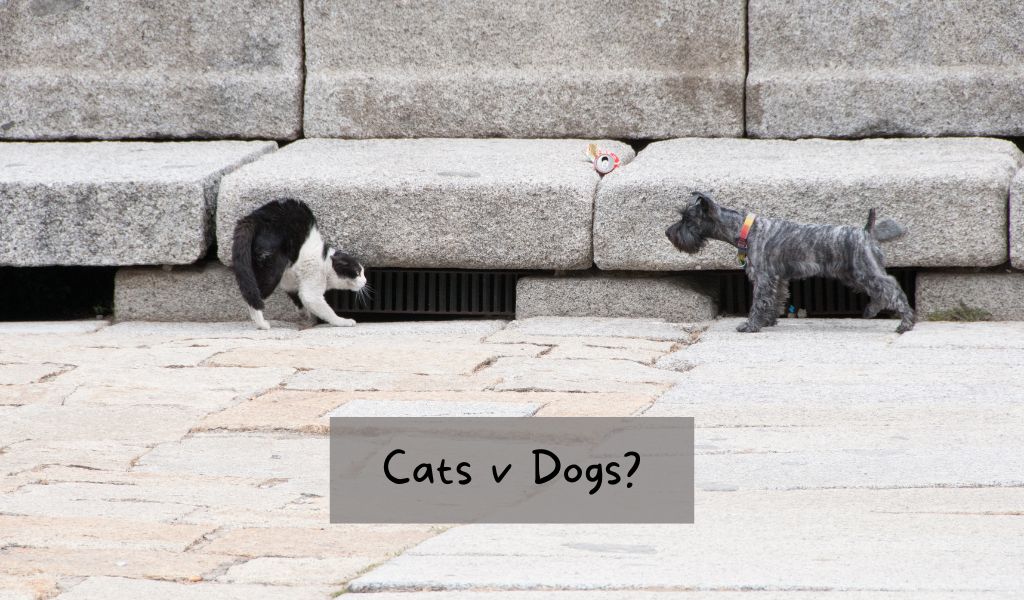It’s no secret that cats and dogs don’t always get along. But why is it that some dogs just can’t seem to stand the sight of a cat?
While there isn’t one single answer, understanding what causes this behaviour can help pet owners work towards creating a more harmonious relationship between their furry friends.
Many dogs and cats don’t get along because they haven’t been properly socialised or introduced to one another. Dogs may have had a negative experience with a cat in their socialisation period, leading them to fear or dislike cats as adults. Additionally, dogs have a strong prey drive, so if a dog hasn’t been trained, they may instinctively chase cats.
Why do dogs hate cats and what are the common causes of this behaviour?
Dogs and cats may compete for resources and territory, leading to animosity between the two species.
Factors such as breed, size and age will play an important role in determining how a particular dog might feel about cats.
Small breeds may be less likely to express aggression toward felines, while larger breeds may be more likely to act in an unfavourable manner.
In addition, dogs that have been abused or have never interacted in a positive fashion with cats are more likely to develop a dislike or even fear of them.
“Small breeds are less likely to be aggressive towards cats than larger breeds of dog.”
Research indicates that female dogs are typically less inclined to show hostility towards cats than male dogs, particularly if they’ve been spayed.
Furthermore, any training or reinforcement of negative behaviour towards cats can lead to an unwarranted fear or even hate of these animals.
Understanding each dog’s individual history and allowing positive interactions within a controlled environment is key and should always be considered if the two species need to co-exist peacefully.
•Dogs have been portrayed as mortal enemies of cats for many years, with this rivalry being the fodder for cartoons and movies.
• However, not all dogs hate cats – if they are raised together, they are more likely to get along.
• One key factor that can make dogs hate cats is prey drive – when a dog’s instinct to chase and hunt is triggered by a cat’s behaviour.
• Another factor is the difference in personality between dogs and cats – some breeds of dog are more prone to aggression towards small animals than others.
Dogs have the instinct to chase anything that moves quickly
Dogs will chase cats if the opportunity arises, due to their instinct to hunt and chase.
This is especially true for dogs that haven’t been trained against this behaviour.
If a dog has not encountered cats prior to adulthood, it may be more likely to chase them when presented with the opportunity.
They don’t speak the same language
Dogs and cats communicate in different ways, making it difficult for them to understand one another.
Dogs use body language and vocalizations such as barking or growling, while cats rely on facial expressions, tail movements and purring when communicating with other animals.
This can lead to confusion and frustration when the two species interact, causing stress levels to rise.
Additionally, because cats tend to behave in a more aloof manner than dogs, it can be difficult for the dog to ascertain what type of behaviour is appropriate.

It could be a grudge from past experiences
Dogs may have had a negative experience with cats in their past that has caused them to develop a fear or dislike of felines.
This can range from simply seeing cats as competition for resources and territory, to having been attacked by a cat at some point in their life.
If dogs are exposed to too much stress due to these experiences, they may develop an aversion to cats that is difficult to undo.
Poor socialisation can lead to negative encounters between cats and dogs
Poor socialisation of either species can lead to negative encounters between cats and dogs.
If the cat has not been properly socialised with other animals, it may be more likely to act defensively when confronted by a dog, leading the dog to become frightened or aggressive.
Additionally, if a dog is not socialised with cats during its puppyhood, it may be less likely to accept a cat into its environment as an adult.
Not all cats and dogs get along like cats and dogs
It’s fair and accurate to note that not all cats and dogs dislike each other and some may even form solid friendships.
With the right amount of patience, understanding and care, cats and dogs can learn to co-exist peacefully in the same household.
Proper introductions should be made slowly and under controlled conditions, preferably with both animals on leads or harnesses to reduce the risk of injury to either species.
Tips on introducing your dog to a cat for the first time
When introducing your dog to a cat for the first time, it’s important to create a safe and positive environment.
Start by allowing the animals to sniff each other from a distance before gradually moving closer together.
It’s also important to reward both animals with treats when they behave calmly and quietly around each other.
If there are signs of aggression or fear, separate the animals and start again at a greater distance.
With patience and proper handling, cats and dogs can learn to live together harmoniously.
Before you go
Dogs can have some unusual traits and you can learn more about your dog’s behaviour with our expert articles.
Remember that cats and dogs may have a natural aversion to each other, but with the right approach they can learn to co-exist peacefully.
Understanding the individual histories of both animals is key to creating a safe and positive environment, as well as taking things slow when introducing them.
With patience, understanding and proper handling, cats and dogs can form strong bonds with one another.




